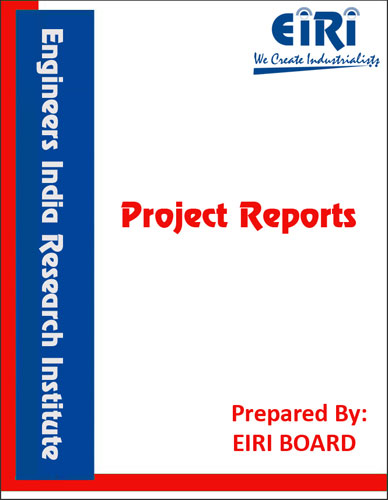The project report includes Present Market Position and Expected Future Demand, Market Size, Statistics, Trends, SWOT Analysis and Forecasts. Report provides a comprehensive analysis from industry covering detailed reporting and evaluates the position of the industry by providing insights to the SWOT analysis of the industry.
The Hazardous Wastes (Management and Handling) Rules, 1989, notified under the Environment (Protection) Act, 1986 and subsequent amendments in 2000, 2003, 2008 and 2009 as the Hazardous Wastes (Management, Handling and Trans-boundary Movement) Rules, regulate management of hazardous wastes generated within the country as well as export/import of such wastes. These rules refer to effective management of hazardous waste, mainly solids, semi-solids and other industrial wastes, which do not come under the purview of Water (Prevention and Control of Pollution) Act and Air (Prevention and Control of Pollution) Act and also to enable Authorities to control storage, transportation, treatment and disposal of waste in an environmentally sound manner.
Any waste, by virtue of any of its physical, chemical, reactive, toxic, flammable, explosive or corrosive characteristics causes danger or is likely to cause danger to health or environment, whether alone or when in contact with other wastes or substances is defined as hazardous. The amendments are aimed to bring greater clarity to the classification of hazardous wastes by linking generation of waste streams to specific industrial processes. Simultaneously, threshold levels for concentration of specified constituents in wastes were laid down to distinguish between hazardous and other wastes.
For regulating imports and exports, wastes have been classified as either ‘banned’ or ‘restricted’. The procedure for registration of recyclers/reprocessors with environmentally sound management facilities for processing waste categories, such as used lead acid batteries, non-ferrous metal wastes and used oil, respectively, has also been laid down. Further, separate rules have also been notified to regulate handling and management of biomedical wastes as well as used lead acid batteries.
Incineration is a waste treatment process that involves the combustion of organic substances contained in waste materials.[1] Incineration and other high-temperature waste treatment systems are described as “thermal treatment”. Incineration of waste materials converts the waste into ash, flue gas, and heat. The ash is mostly formed by the inorganic constituents of the waste, and may take the form of solid lumps or particulates carried by the flue gas. The flue gases must be cleaned of gaseous and particulate pollutants before they are dispersed into the atmosphere. In some cases, the heat generated by incineration can be used to generate electric power.
Incineration with energy recovery is one of several waste-to-energy (WtE) technologies such as gasification, pyrolysis and anaerobic digestion. While incineration and gasification technologies are similar in principle, the energy product from incineration is high-temperature heat whereas combustible gas is often the main energy product from gasification. Incineration and gasification may also be implemented without energy and materials recovery.
In several countries, there are still concerns from experts and local communities about the environmental impact of incinerators (see arguments against incineration).
In some countries, incinerators built just a few decades ago often did not include a materials separation to remove hazardous, bulky or recyclable materials before combustion. These facilities tended to risk the health of the plant workers and the local environment due to inadequate levels of gas cleaning and combustion process control. Most of these facilities did not generate electricity.
Incinerators reduce the solid mass of the original waste by 80–85% and the volume (already compressed somewhat in garbage trucks) by 95–96%, depending on composition and degree of recovery of materials such as metals from the ash for recycling.[2] This means that while incineration does not completely replace landfilling, it significantly reduces the necessary volume for disposal. Garbage trucks often reduce the volume of waste in a built-in compressor before delivery to the incinerator. Alternatively, at landfills, the volume of the uncompressed garbage can be reduced by approximately 70%[citation needed] by using a stationary steel compressor, albeit with a significant energy cost. In many countries, simpler waste compaction is a common practice for compaction at landfills.
Incineration has particularly strong benefits for the treatment of certain waste types in niche areas such as clinical wastes and certain hazardous wastes where pathogens and toxins can be destroyed by high temperatures. Examples include chemical multi-product plants with diverse toxic or very toxic wastewater streams, which cannot be routed to a conventional wastewater treatment plant.
INTRODUCTION
DEFINITION OF HAZARDOUS WASTE AND ITS APPLICABILITY
CHARACTERISTICS OF HAZARDOUS WASTE
MARKET SURVEY
DETAILS OF HAZARDOUS WASTE GENERATION IN INDIA
EXISTING INCINERATOR IN BANGALORE
OPPORTUNITIES FOR HAZARDOUS WASTE RECYCLING & TRRANSPORTATION
REQUIREMENTS FOR TRANSPORTATION OF HAZARDOUS WASTE FOR DISPOSAL
STORAGE OF HAZARDOUS WASTE
COMMON HAZARDOUS WASTE INCINERATION FACILITIES
PROCESS OF HAZARDOUS WASTE INCINERATION
PROCESSING DETAILS FOR HAZARDOUS WASTE IN
ROTARY INCINERATION
MONITORING AND ON-LINE DISPLAY REQUIREMENTS
PROCESS FLOW DIAGRAM
CONSTRUCTION DETAILS OF ROTARY KILN INCINERATION
GUIDELINES FOR SETTING UP OF OPERATING FACILITY
FOR HAZARDOUS WASTE
PRINCIPLES OF PLANT LAYOUT
PLANT LOCATION FACTORS
EXPLANATION OF TERMS USED IN THE PROJECT REPORT
PROJECT IMPLEMENTATION SCHEDULES
SUPPLIERS OF PLANT AND MACHINERIES
SUPPLIERS OF PLANT AND MACHINERIES (IMPORTED)
APPENDIX – A :
1. COST OF PLANT ECONOMICS
2. LAND & BUILDING
3. PLANT AND MACHINERY
4. FIXED CAPITAL INVESTMENT
5. RAW MATERIAL
6. SALARY AND WAGES
7. UTILITIES AND OVERHEADS
8. TOTAL WORKING CAPITAL
9. COST OF PRODUCTION
10. PROFITABILITY ANALYSIS
11. BREAK EVEN POINT
12. RESOURCES OF FINANCE
13. INTEREST CHART
14. DEPRECIATION CHART
15. CASH FLOW STATEMENT
16. PROJECTED BALANCE SHEET



